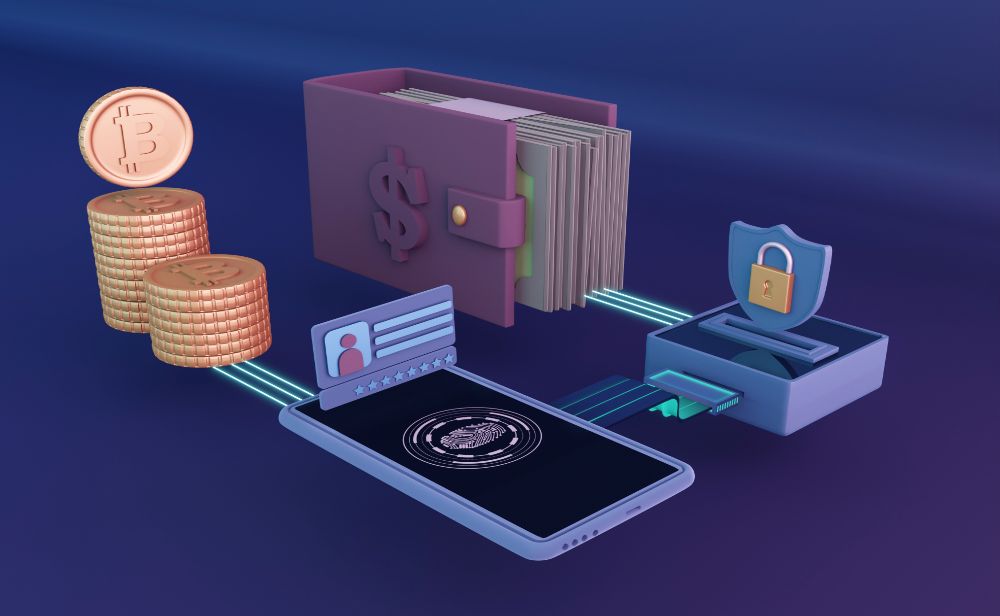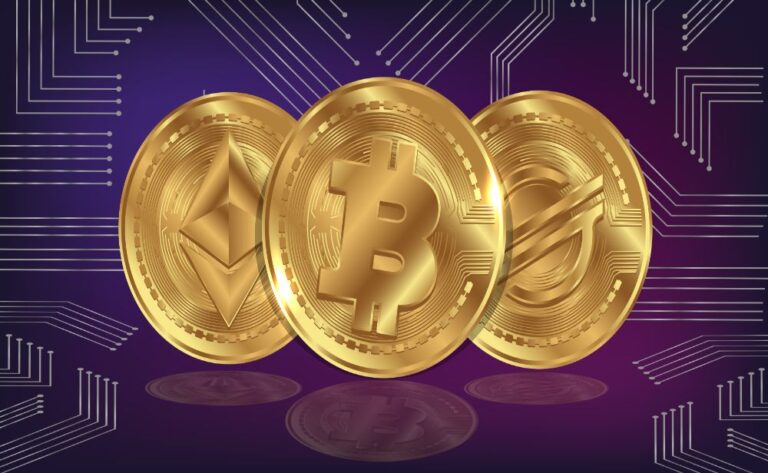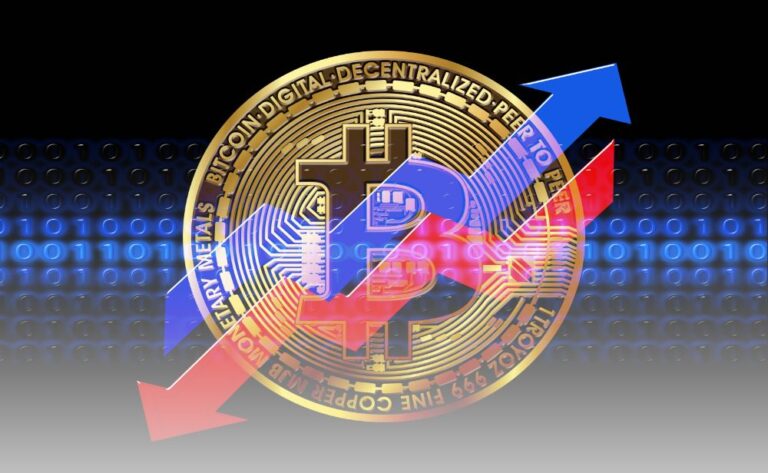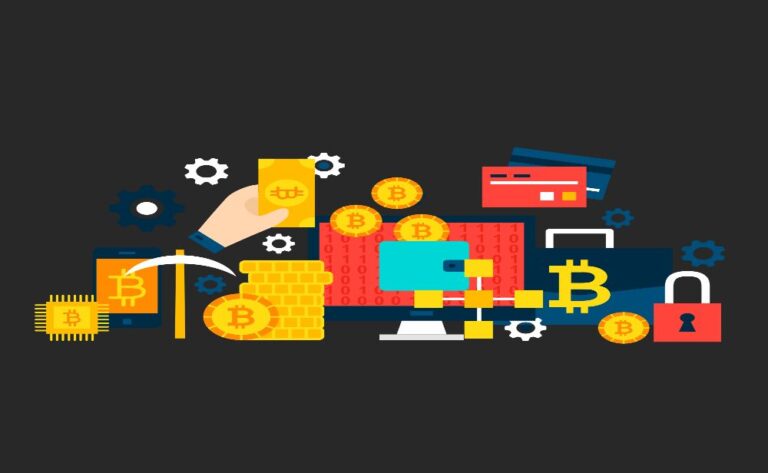A Beginners Guide to Crypto Investing

We have been inundated with queries concerning cryptocurrencies from friends, family, and complete strangers online during the past few weeks. Which cryptocurrency should I purchase as an investment? is one of the most frequent queries we get.
Few things set apart the hundreds of cryptocurrencies listed on websites like Coingecko in the perspective of most novice investors. It takes endless hours of research and a decent bit of technical/financial knowledge to fully comprehend these distinctions and the market in general. a quality that cannot reasonably be demanded of everyone.
We aim to ensure that everyone has a reliable framework for assessing cryptocurrencies so they won’t fall for frauds and poor investments.
Basics: What kinds of Cryptoassets are there?
Many times, when people use the term “cryptocurrencies,” they imply different things. For instance, it’s typical to hear people refer to DeFi tokens like Maker or Aave or stablecoins like USDC as “cryptocurrencies.”
Cryptocurrency assets actually vary greatly.
Cryptocurrency
*The primary native asset of a base chain, acting as the network’s default currency and playing a specific role. It is required to pay for network transactions at the very least (and in certain circumstances more, as we’ll see later). A decentralized group of validators who protect the network receive this revenue. This currency is bitcoin (BTC) for the Bitcoin blockchain and ether (ETH) for the Ethereum blockchain.
Bitcoin Tokens
A token on a blockchain like Ethereum can theoretically represent any asset type, including fiat money, bonds, stocks, and even commodities.
On Ethereum, tokens function similarly to contracts. These contracts are written in code and enforced by the Blockchain, as opposed to being written on paper and enforced by judges. Contracts between two or more parties are the only item that constitutes financial assets.
Since users may always redeem their stablecoins for “real dollars,” a stablecoin like USDC is stable since its issuer Circle promises to retain a comparable amount of dollar reserves in bank accounts.
Another business may opt to issue shares on the blockchain; in that instance, the token would have the same cash flows, voting rights, and other characteristics of stock. When the cryptocurrency exchange Coinbase goes public later this year, there are rumors that it will issue a portion of its stock on Ethereum.
According to our definition from earlier, as we can see, cryptocurrencies make up the majority of the assets on the image above. With a few notable exceptions, they stand for distinct networks that are all vying for market share.
How can these digital currencies be contrasted?
Let’s consider these questions: What is the goal of a cryptocurrency and what conditions must exist in order for a cryptocurrency to be embraced and finally “succeed”?
What does it matter if the Blockchain is decentralized, and why?
In essence, a blockchain is an extremely ineffective sort of database architecture. It is far less expensive to store and update transactions in a centralized database that is under the authority of a single actor or business. If we take payments as an example, the Bitcoin network is unable to execute 100 times as many transactions per second as PayPal. But because blockchains are decentralized, they have one advantage over centralized databases that they will never have.
Contrary to PayPal, no one organization or authority has the power to choose which transactions will be approved or to decide to seize or freeze a user’s assets. The network operates in accordance with its own logic, which all users (wallets, miners, etc.) must adhere to. A sufficiently decentralized blockchain cannot experience a sudden outage, as, for instance, Slack or Google occasionally do. A decentralized network is more reliable.
Because the network is decentralized, anyone can join it as a user or a miner or validator. There aren’t any gatekeepers or actors with special privileges. A blockchain is universal, impartial, and decentralized by definition, much like the internet. Imagine how competitor nations like China and Russia would not have embraced the internet and begun to construct their economies on top of it if it were under American control. Neutrality promotes widespread adoption.
Are there network effects with the Blockchain?
Network effects are a phenomenon where more people or participants make something more valuable and useful. Let’s use Facebook as an illustration. It would be simple from a technological sense for a rival to copy the Facebook app. Facebook’s 2.7 Billion users are what give it value. Without your friends, information about your interests, and images, a social network is useless.
It turns out that crypto networks operate in the same way. Conservative estimates place the number of “users” of Bitcoin at above 200 million.
As a result, you can send bitcoin to more than 200 million users who are already a part of the network and recognize bitcoin as a valuable asset. History has shown us that social agreement determines what is regarded as a valuable medium of exchange. People used to accept clams, gold, and subsequently government-issued bank notes as currency in the past (a.k.a fiat currencies).
Bitcoin and Ether are both perceived as money within their own networks, and as more people join the network and adopt this viewpoint, the value of these assets rises.
But there are many more reasons why network effects are important in crypto networks. A blockchain must be sufficiently decentralized in order to be considered impartial. This is determined by how many actors participate in the transaction validation process and how many nodes hold the data. Currently, there are 11.000 nodes spread across the globe in the case of Ethereum, and more are joining every day. It is nearly hard to shut down the Ethereum ledger as long as its data is present on so many distinct machines.
Finally, network effects are crucial to luring developers to construct on top of these open networks. One more internet analogy: If there weren’t so many beneficial apps created on top of it, would the internet still be as valuable as it is? From basic programs like web browsers that enable users to connect to the network to sophisticated programs like Facebook or YouTube that allow users to use the network
Developers are required in the cryptocurrency industry to enhance the network, create crypto wallets that allow end users to access the network, and create additional applications that simplify processes like trading, lending, and borrowing of crypto assets.
The combined efforts of developers creating a single public network are far more effective and efficient than those of any single firm. When developers join a new network, they consider those that already have a robust tool ecosystem.
The majority of the components needed to build an online application today are easily accessible, including user authentication systems, SMS alerts, databases, payments, etc. When creating a new app, developers don’t want to constantly recreate the wheel; instead, they want to quickly realize their concept. On Ethereum, where more than 2500 developers create applications each month, there is by far the most developed developer environment in the cryptocurrency industry.
Does the Blockchain’s native cryptocurrency create value?
What is my investment thesis for that asset? is arguably the most crucial question to ask yourself when determining whether to invest in a particular cryptocurrency. What would have to occur for the cryptocurrency to gain value? You don’t have to develop your own thesis; you can read someone else’s online. However, hoping that an item would increase in value because there is enough publicity surrounding it is unlikely to be effective.
No matter how often a network is used, its native token cannot appreciate in the absence of sound network economics. The same is true for almost any asset; for example, copper is a commodity whose price is extremely stable despite being utilized in virtually all technological gadgets. An asset’s value isn’t determined by usage alone. However, it may be possible if there is a mix of strong demand, limited supply, or certain built-in cashflows from the asset (more on this later!)
The argument in favor of bitcoin: “Digital Gold”
The first cryptocurrency to be created was bitcoin. Therefore, it gains from having a significant advantage in terms of brand recognition, adoption, and network effects. Its market valuation as of this writing is $336 billion. Since network users are anonymous, it is difficult to know for sure how many people own and use bitcoin, but conservative estimates put the number between 100 and 200 million.
At its foundation, Bitcoin is a decentralized peer-to-peer network that enables sending bitcoin to any other network user without the need for a middleman who could obstruct the transaction. A group of bitcoin miners examines every transaction that comes from a bitcoin wallet. The transaction is validated if it is legitimate.
The fact that the quantity of Bitcoin is hard-capped at 21 million units is one of its most significant characteristics. There is no way for a single actor in the network to alter this supply policy. Nearly 19 million bitcoins exist now. Every block (on average 10 minutes), 6.25 bitcoins are awarded to the lucky miner who validates user transactions ahead of all other miners. The so-called “block reward” is reduced by half every four years until the year 2140, after which time no new bitcoins will be created.
A good store of value, bitcoin has a fixed supply. Or, an asset that will maintain its purchasing power throughout time. Fiat currencies, such as the dollar or the euro, are controlled by a single organization that has the power to generate additional fiat money whenever it pleases. A fiat currency’s value is based on public confidence in the government (e.g., to wisely manage their monetary policy).
This is why anytime economic unpredictability and inflation threatened, people have resorted to gold for ages. These situations are the norm in many nations around the world, making self-protection a constant necessity.
We can think of the US Dollar as a centralized monetary asset that can be depreciated by a single actor, in contrast to gold, which is a decentralized monetary asset that cannot be.
Let’s examine why bitcoin is likened to a digital version of gold now:
1. Difficult to mine: In the Bitcoin network, miners must employ computing power to verify transactions. Both hardware and energy are used up during the process.
2. Digital: Since bitcoin is totally digital, it is less expensive to maintain and more convenient to transport than physical gold. For instance, in 2013, it cost the German government $7.6 million to return the gold reserves it had kept in the US.
3. Instantly verifiable: The network instantly confirms a bitcoin’s legitimacy. Compared to gold, bitcoin is less expensive to hold and more convenient to move.
4. Resistance to censorship: No government has the right to confiscate a person’s property. Anyone other than the owner of the private key cannot access the assets held in a bitcoin wallet.
5. Dividable: A bitcoin can be split into 100 million smaller units called “satoshis.”
As we’ve already mentioned, social consensus helps to define what makes a good store of value. Currently, a growing number of people believe that bitcoin will serve as a reliable store of value for the ensuing decades. Younger generations in particular appear to prefer bitcoin over gold and feel alienated by the latter. But organizations like Fidelity, Visa, and JPMorgan are also beginning to express their excitement for bitcoin. Bitcoin was purchased by publicly traded companies including Square and Microstrategy in order to diversify their financial sheets.
The argument in favor of Ethereum: “An online financial system”
Ethereum and bitcoin, its forerunner, have a lot in common. Ethereum is a blockchain that is managed by a decentralized network of miners, much like bitcoin. Ethereum, however, has a further feature that sets it apart from other platforms: creation.
““Smart contracts” refers to the tool that Ethereum developers use to build things. Smart contracts are computer programs that carry out particular instructions. These smart contracts can be used by anybody in the world after being deployed to the Ethereum Blockchain, with no third party being able to intervene.
Decentralized Finance (DeFi) apps are the smart contract use case that Ethereum users find most appealing. DeFi applications let users trade, lend, and borrow on the Ethereum blockchain, just like they would normally do with a bank or other financial institution. In less than two years and without the help of a single bank, these applications together hold and manage more than $19B in user cash.
DeFi applications are maintained by communities that are open-source and make decisions about how to develop them together. This financial system has the potential to be totally unreliable and decentralized. This means that users in developing nations with significant inflation can instantly buy stablecoins (dollar tokens), invest in them, earn interest, trade them, or send them anywhere in the world.
A local currency is required for this new financial system to function. The native asset of Ethereum is ETH, just as the US economy depends on the US currency to pay taxes, serve as legal money, and make purchases at retailers. Users must pay a modest transaction charge known as gas, which is measured in ETH, for all transactions. Ether can be thought of as a share in the network; as more programs are developed on top of Ethereum, the value of the asset will increase.
Ether is used and sent to miners whenever an asset is moved, a loan is generated, a purchase is performed, or a new on-chain cooperative is launched. Users must purchase ETH in order to conduct transactions, much like how one must purchase fuel in order to operate a vehicle. Fee income is important since it eventually covers the cost of the network’s security.
Compared to bitcoin, Ethereum produces greater transaction fees. In terms of usage and revenue from transaction fees, no other network even comes close to Bitcoin and Ethereum. The majority of the other initiatives seen in the screenshot above are Ethereum-based software programs. They increase the value and usefulness of the Ethereum economy. Networks like Ripple actually rank 17th, despite what their worth would suggest.
There is currently no correlation between usage and ETH price growth because these miners can sell their earned ETH back on the market, but in the very near future, a new policy will be implemented that will burn a small portion of all the ETH paid in transaction fees, effectively turning ETH into a deflationary asset (one that shrinks in supply).
Last but not least, ETH is currently transitioning from Proof-of-Work (mining) to Proof-of-Stake (staking). The main goal of this change is for Ethereum to scale better and handle more transactions, but as a side effect, Proof-of-Stake also increases the value of ETH.
Transactions in Proof-of-Stake are validated by validators who vote and lock up capital rather than miners, who must use processing power to solve an algorithm (32ETH per validator node). If they cast a malicious vote, their stake is reduced; if they cast a valid vote, they are rewarded with ETH. As a result, ETH is now a capital asset, similar to a bond, that produces consistent cash flows when staked. There is almost no motivation for validators to sell their ETH under proof-of-stake. Instead, they would like to amass more ETH so that they may set up more validator nodes and generate more cash flows.
There has already been more than $1 billion worth of ETH staked, despite the fact that we are only in Phase 0 of this change, which will take 1-2 years to complete.
From an investing standpoint, the combination of all these distinct utilities makes ETH a really intriguing asset. You are purchasing a stake in an internet-like protocol when you purchase ETH. Ethereum is doing for finance what the internet did for information. The internet’s financial sector.
Conclusion
Consider factors such as how decentralized a network is, how many people use it, how much utility it offers, and how its native currency is constructed to capture the value from all of the activity taking place on its network when choosing which cryptocurrencies to purchase.
You will see that Ripple Labs, a centralized business, owns the majority of the tokens in the case of Ripple, for instance, which we discussed at the beginning. You’ll also see that XRP, the native cryptocurrency of the Ripple Network, is completely useless and that the network is not at all decentralized.
If any of the aforementioned requirements are not met by the cryptocurrency, it is highly likely that it does not require a blockchain and is merely utilizing the term “cryptocurrency” for marketing purposes.





